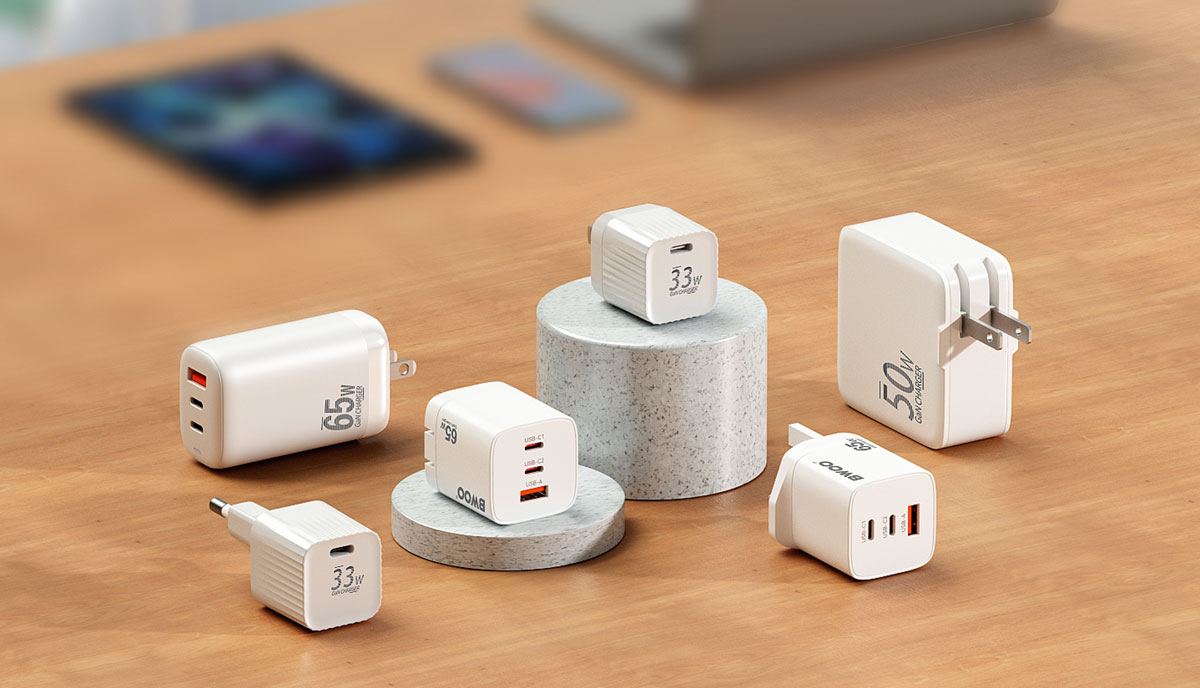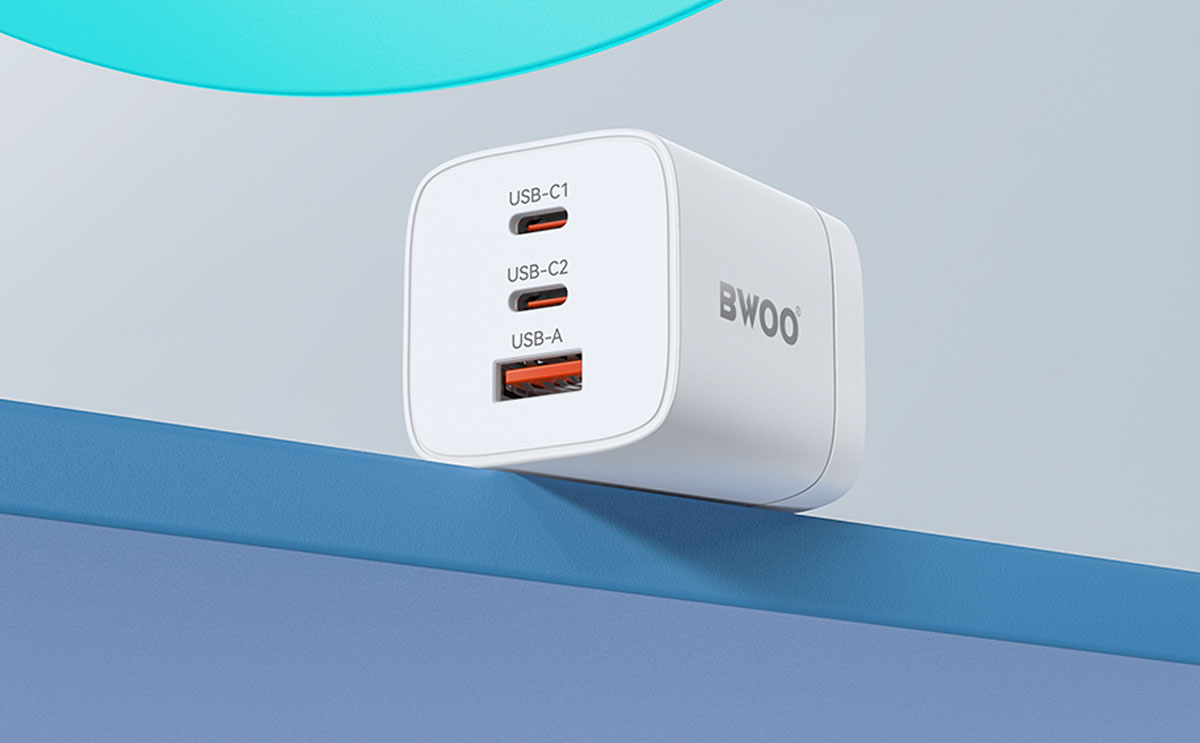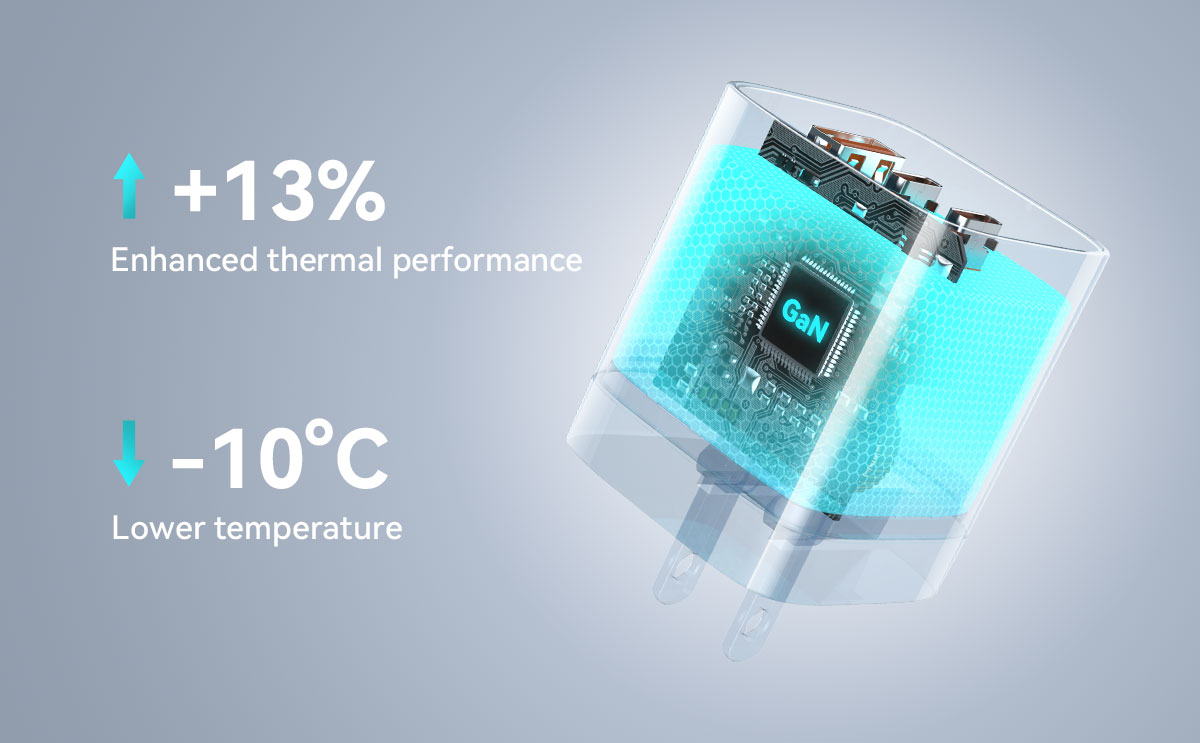GaN Charger vs Normal Charger

2023-11-28 15:29

Since the first GaN charger was introduced in 2018, this type of charger has mushroomed in the charging industry. Many third-party manufacturers are developing their own GaN gadgets to get a larger market share in the GaN charger industry.
As an increasing number of GaN chargers flock into the charger market, GaN technology has been gaining popularity. Many people have started to discuss the topics "GaN Charger vs. Normal Charger" and "GaN Charger vs. PD Charger". However, which one is better? What are the differences between them? A series of questions are coming to our minds. Therefore, we will explain all of them to you.
What is a GaN Charger?
GaN charger is a kind of charger based on a wide-bandgap semiconductor called Gallium nitride. Compared with silicon semiconductors, GaN semiconductors can deliver higher power density and charging efficiency and handle power more efficiently while reducing the power losses of power converters by 80% and minimizing the demand for cooling components. Therefore, compared with traditional chargers, GaN chargers tend to be smaller, more efficient, and charge faster.
How Does GaN Chargers Work?
Based on GaN semiconductors, GaN chargers deliver outstanding performance in the power conversion process. With faster switching speeds and a higher breakdown voltage, it can efficiently reduce the power losses during the charging process to achieve faster and more efficient charging.
When the GaN charger is plugged into the AC power source, the rectifier inside the charger will convert the AC power into DC power. Through the GaN switch, DC power will be transformed into high-frequency AC signals that will be converted into lower voltage levels through the transformer. Finally, through the rectifier, the low-voltage AC power will be converted into DC power to charge your device.

GaN Charger vs. Normal Charger
Have you understood what makes GaN chargers different from normal chargers by now? If not yet, please continue reading the post. In the following, we will figure out the differences between these two types of battery chargers in every aspect.

Bandgap
The main difference between them is the difference in the built-in semiconductors. Generally speaking, traditional chargers are silicon-based chargers, which implies that they depend on silicon semiconductors. On the contrary, GaN chargers use a GaN semiconductor, which is the third generation semiconductor material.
All semiconductor materials have a bandgap. This is an energy range where no electrons can exist. The bigger the bandgap, the lower the electrical resistance, and the higher the material's power conversion efficiency and thermal conductivity.
Typically, GaN has a 3.4 eV bandgap, which is wider than silicon's 1.12 eV bandgap. As a result, it allows for higher voltages and currents to provide efficient charging.

Charging Speed and Efficiency
In general, the built-in components of the chargers, especially the chip, play an important role in the charging capability and efficiency of the charger.
GaN materials provide faster switch speeds and higher power density, which enable GaN chargers to achieve faster charging speeds while wasting less energy, contributing to high-efficiency charging.
Silicon chargers can't handle high wattage and do not have a high power density like GaN chargers because they use a narrower bandgap semiconductor material. This means they can't charge as quickly and efficiently as GaN chargers.

Size and Weight
In terms of size and weight, GaN chargers are smaller and more lightweight than ordinary chargers.
GaN material has a larger bandgap than silicon. This allows it to handle high voltage and high-density charging. That is to say, they do not need a larger transformer. Therefore, GaN chargers are more lightweight and have a smaller and more compact size.
Normal chargers cannot rely on silicon semiconductors to handle high voltages and currents. Instead, they depend on transformers to increase charging speed due to their narrow bandgap. That is the reason why this type of charger tends to be larger.

Dissipation and thermal performance
Apart from the differences in their charging performance, size, and weight, the difference in the bandgap between the two types of chargers brings its own differences in dissipation and thermal performance.
GaN chargers' wider bandgap enables them to support high power density and more efficient charging with less power consumption, so they will not cause excessive heat while charging. Moreover, they have stronger thermal conductivity, which allows them to have better heat dissipation without a high demand for cooling elements.
In summary, Gallium Nitride chargers are superior to silicon-based chargers in multiple ways, such as fast charging speed, high power density, smaller size, and better thermal capability. As a result, they pose a strong challenge to normal battery chargers.
Meanwhile, another fast charging gadget, the PD charger, is famous for its fast charging speed and high power efficiency in the charging field. Silicon-based as they are, they are still more efficient than standard chargers. Therefore, many people are starting to compare them with the GaN chargers. Then what are the differences between them? Here we will explore how the two types of battery chargers differ.

What is a PD Charger?
PD chargers are a type of fast charger that provides fast charging for a wide range of USB-powered devices such as mobile phones, tablets, laptops, and more. Compared with USB chargers, it offers more flexible, efficient, and high-voltage charging.
How does a PD Charger work?
PD chargers support the USB PD charging standard, which enables the devices to negotiate for optimal power levels. The PD power brick follows the USB PD standard. It talks to the device it's connected to, reads its power needs, and adjusts its power output accordingly. This ensures the device gets the right amount of power, making charging more efficient than with a regular charger.
PD chargers only work through the USB-C port, which delivers fast data transfer and more flexible and efficient charging capability. With the PD3.1 standard, these chargers can produce a maximum output of 240 watts.

GaN Charger vs. PD Charger
Firstly, these two types of chargers adopt different ways to enhance charging efficiency. GaN chargers improve charger efficiency, size, and weight by using Gallium Nitride instead of silicon semiconductors. For another, PD chargers are still silicon-based, but they rest on the USB power delivery charging technology to enable the devices and chargers to support a higher wattage charging mode for a faster and more powerful charge.
Compared with PD chargers, GaN-based chargers can provide faster charging speeds. Due to the high electron mobility and saturation velocity of Gallium Nitride material, this kind of charger allows for a faster current speed and a larger current to deliver a higher power density, which brings a three times faster charging speed than normal chargers do.
By contrast, using USB-C power delivery charging technology, PD chargers provide four faster charging times than traditional chargers do. However, PD chargers are still silicon-based; therefore, they fall behind the GAN chargers in terms of charging speed due to their different components.
Also, the difference in built-in components determines the visible difference in size and weight between the two types of battery chargers. GaN chargers feature a lighter and smaller body than PD chargers because they use a GaN chip to require fewer heat dissipation elements and use a more compact transformer than silicon-based PD chargers do.
Besides, GaN chargers have wider compatibility than PD chargers, for the reason that they can work with both USB-C and USB-A devices, while PD chargers serve only USB-C gadgets. However, it is worth mentioning that both of these chargers are compatible with multiple devices, including mobile phones, tablets, laptops, earphones, and more.

Conclusion
GaN charges have risen to fame in the power charging field thanks to their advantages of fast charging speed, high power efficiency, superior heat dissipation, and smaller sizes.
As the data shows, GaN chargers have been gaining more and more market share in recent years. However, silicon-based chargers still dominate the charging gadget market.
Besides, the high manufacturing cost and limited supply of GaN chips, to a certain degree, have limited the development of GaN chargers currently. Therefore, they cannot completely take the place of silicon-based chargers and become mainstream chargers right now.
However, it is worth noting that GaN chargers have a more promising future than normal chargers with the above-mentioned advantages in the long run. Since 2020, many countries, including China, have put great efforts into GaN semiconductor research and development, which will accelerate the market share growth of GaN chargers in the future.
Before the peak of GaN chargers arrives, silicon-based charging gadgets like normal battery chargers and PD chargers were still good charging solutions with their impressive features of efficient charging, stable supply, and reasonable prices.
From the perspective of the development of the charging industry, BWOO believes that normal chargers and GaN chargers will serve you over a long period of time together, and both keep upgrading. All manufacturers, including BWOO, change with time and will develop more innovative technology and new solutions to enhance the charging performance of both of them.
Comment
Leave a Reply
Your email address will not be published. Required. Required fields are marked*


















































Comment
There are no comments yet!